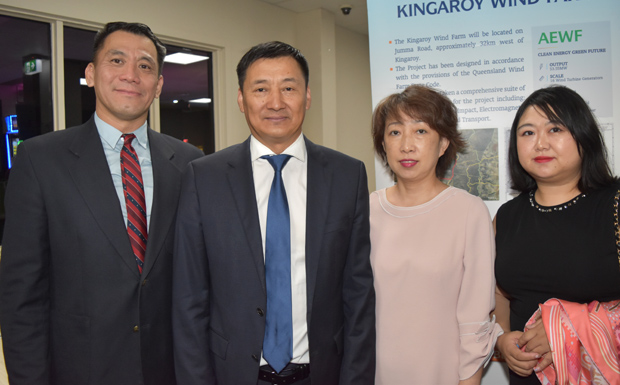
May 9, 2019
Construction of the South Burnett’s second wind farm could begin as early as next year, a public meeting at Kingaroy RSL Club heard on Thursday night.
If approved, the wind farm would be built on a 500ha block near the intersection of Jumma and Glenrocks roads in Mannuem by Australian Energy Wind Farm (AEWF).
AEWF has already bought the land.
The Gold Coast-based company is fully owned by China’s Heilongjiang Ainaji Dianli Pty Ltd which has been involved in 85 renewable energy projects overseas.
The 35 people who attended the “community pop-up event” in Kingaroy were told the 16-turbine Mannuem project was expected to cost more than $200 million and would take about 12 months to build.
It would be able to generate 53.55 megawatt hours at peak capacity and have a 30-year lifespan.
AEWF says this is enough energy to power 19,000 homes and would reduce carbon dioxide output by an estimated 163,000 tonnes per year.
The project would also include the upgrading of roads leading to the site, as well as the construction of eight kilometres of roads within the block.
Several bridges may require strengthening, which would be done at AEWF’s cost.
The project would also require the construction of a substation by Powerlink – funded by AEWF – to feed the wind farm’s output into the State’s energy grid.
Nick Canto from I3 Consulting, the Brisbane-based engineering consultancy engaged by AEWF, said that during construction the wind farm could be expected to create 120 to 130 jobs.
Where possible, appropriately skilled local workers would be used.
After construction, the project would be overseen by five permanent staff.
Mr Canto said the start of construction would depend on obtaining necessary approvals from the State Government, Powerlink, the Australian Energy Market Operator and the South Burnett Regional Council.
However, AEWF was hopeful these approvals and detailed designs for the project could be completed by the end of this year.
If they were, then construction could begin in mid to late 2020.
Unlike AGL’s Coopers Gap Wind Farm 30km to the south, AEWF decided to buy the land rather than lease properties from local landholders.
Mr Canto said the technology behind wind farms has undergone significant advances in the past three years.
The 16 Mannuem wind turbines would each produce between 4.5-5.5MW (the Coopers Gap turbines are rated at 3.63MW).
They would also stand taller than Coopers Gap. Tip height will be 220m with 80m-long blades; in comparison, the Coopers Gap blades are 67.2m long and have a tip height of 180m.
Mr Canto said at the end of the wind farm’s life, most of the decommissioning cost could be recouped from recycling its materials.
However, recent European experience was that it was often more profitable to “re-energise” an ageing wind farm by updating its turbines, since all other necessary infrastructure was already in place.
This meant it was possible the true life of any wind farm could now be much longer than the working life of its turbines.
Mr Canto said the turbine components would be sourced from China, but this was not unusual.
Most turbines already in use were built in either China or India, including those sold by US-based companies such as General Electric, he said.
In response to a question about AEFW’s long-term intentions for the project, Mr Canto said the company was committed to develop and build the wind farm, but he was unable to say if they intended to retain ownership.
He added it was not uncommon for renewable energy projects around the world to change ownership during their lifespan, pointing out that AGL had passed ownership of the Coopers Gap Wind Farm to the Powering Australian Renewables Fund (PARF) before the project was finished.
New owners would be obliged to comply with the same conditions governing operation and decommissioning as the organisation that built it.
Mr Canto said AEWF was committed to supporting the host communities of its projects by establishing a locally managed community benefit fund to support local community groups.
Input would be sought in coming months from the community about how the Mannuem Wind Farm’s community benefit fund could be implemented.
- Related article: Chinese Explore Wind Farm Project
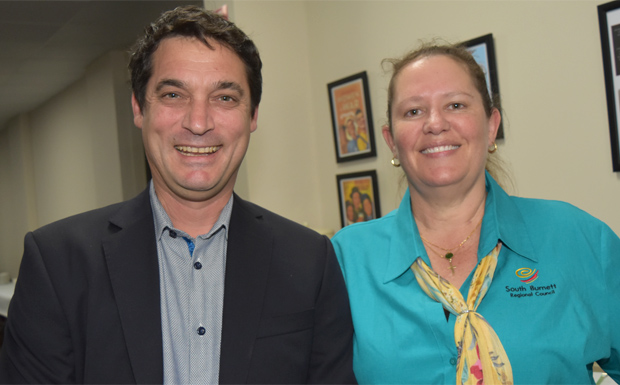
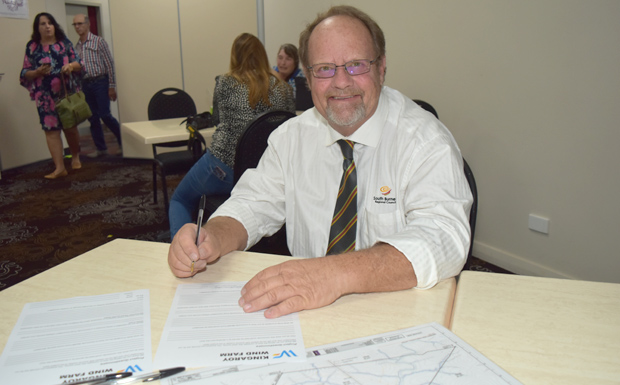
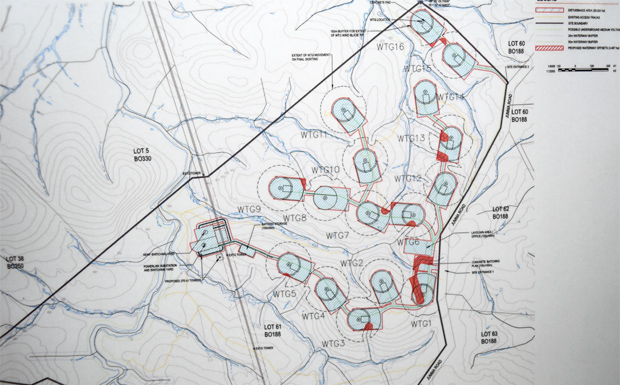
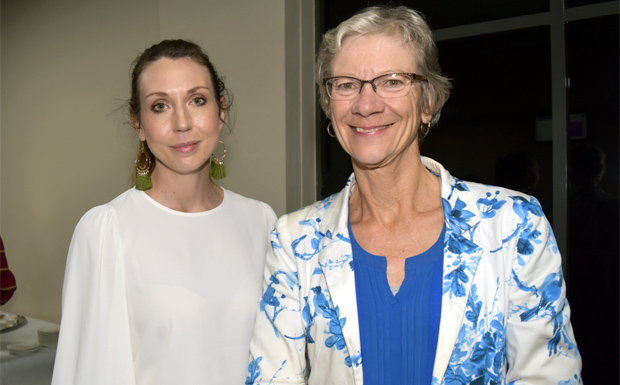
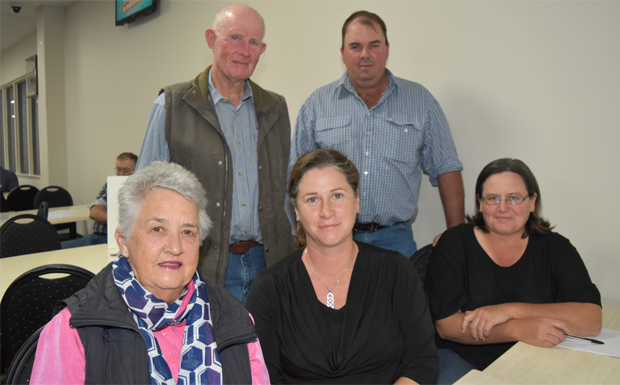









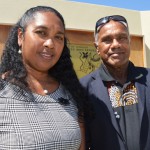














Are there any details related to how locals can register their interest in employment for this construction work?
It is very early days with this project, with no approvals yet in place. However, I3 Consulting – https://icubed.com.au/ – were the people who organised the presentation.
Are these things really of any real benefit or are they just an ideological dream? A week ago in Victoria, wind was only supplying 0.6% of the needed power. And this morning at 6:35am here in Queensland, wind only supplied 1.2 % and coal 90.6%.
Kill coal and then what? If wind is to be the answer there will need to be at least 100 times as many as now and will the reliability be there? And at what cost?? As a farmer who worked a lot at night I can assure you all that most times the wind drops right off during the night. Big solar is useless at night also. So these things are questionable as to their economic benefit (take away the big renewable subsidies and then see how sought-after they would be!)
Environmentally these things nearly do as much damage in the construction, delivery and installation as they save in the electricity produced. And what of the real big issues – their deconstruction and disposal at their end of life?? And aren’t most wind turbines imported? Really good for our balance of trade, eh?
I see the points, but don’t totally agree. According to Google, last year wind power accounted for 7.1% of Australia’s total electricity demand and 33.5% of total renewable energy supply, which means that coal, hydro and solar accounted for the rest.
Yes, renewables are unreliable power sources. But that can be fixed with a few batteries like the giant one South Australia now uses. And while the need for steel may mean we’ll never be rid of coal entirely, it’s easy to see coal as a power source will be scaled back dramatically over the next few decades as more renewable sites are established. And so it should, because the financial consequences of failing to tackle climate change would be astronomical.
Yes, decommissioning is a concern (for coal-fired power stations just as much as wind farms). But in Europe they’re no longer decommissioning old wind farms – just pulling down the old turbines and putting up new ones because all the other necessary infrastructure is already in place. And before anyone raises the social media furphy about how much energy is used to build wind turbines, the answer is six months’ worth, which is repaid with a further 29.5 years of pollution-free energy production.
Yes, wind farms don’t create as many jobs as a coal-fired power station or a coal mine. And yes, we buy in foreign-made turbines in exchange for Aussie products like beef and other foodstuffs (ie it’s a cost-neutral swap). But don’t forget that Coopers Gap and the new wind farm at Ironpot are expected to create a combined 30 jobs between them. So replacing Tarong and Meandu’s workforce only needs another 10 to 20 wind farms or solar farms of comparable size, and we’ve got plenty of space to put them.
Bill, I do not disagree with you but we are sure gonna need a lot of big batteries and they sure as hell do not charge themselves. There are four aluminium smelters in Australia. Recently I heard an interview with Mat Howell, CEO of Tomago smelter north of Sydney. He stated that the giant battery of South Australia would run his smelter for eight minutes only. Smelters need to run 24/7. One days use would require 180 of these giants at a little over $90 million a piece [thats 16,200 million dollars] and that is only for 1 smelter and the rest of the country needs to run also!! Bloody scary eh. We just cannot kill off coal as the Green/Labor would want us to do. Hey, when the batteries are empty twice the power is needed to run the place as well as recharge the batteries. Here is a link to the interview, well worth listening to right to the end.
https://www.2gb.com/nations-largest-electricity-user-pushes-back-against-labors-battery-scheme/
The environmental issues of battery production is somewhat scary also, some links!
https://greenerideal.com/news/business/0617-metal-extraction/
https://www.washingtonpost.com/news/in-sight/wp/2018/02/28/the-cost-of-cobalt/?noredirect=on&utm_term=.a5b5ecc82f58
https://www.dw.com/en/chiles-lithium-blessing-or-curse/a-43721539
http://www.lithiummine.com/lithium-mining-and-environmental-impact
https://www.wired.co.uk/article/lithium-batteries-environment-impact
I do not know if the above links are for real or not but it makes for interesting reading and I guess production techniques should be getting better. I have heard that Australia is on the cusp of lithium production now. Should be good.
Sure makes one wonder of the cost/benefit of the global warming fix and is it for real even, and if we shut down ALL Australia’s emissions tomorrow, how much will the temperature decrease? maybe half a degree. I do not know even to believe it as I am nearly 80 years old now and I am sure that when I was real young there were much hotter years than of late.
Here is a real good, informative link to a real-time site that gives very detailed info on electricity. You can follow it as the day and night progresses and see where the generation comes from and also how much from all types of generation. Right now, SA and Vic are fairly windy and NSW and Qld are fairly sunny; almost as informative as a weather site!
https://reneweconomy.com.au/nem-watch/
Interesting to see on the RenewEconomy site that Tasmania and South Australia have completely eliminated coal from their power generation mix, and WA looks like it’s about halfway there as well. This shows it can be done, and thank you for finding it (I didn’t even know this site existed).
Re lithium and other battery materials, I agree they have issues and also agree those are being reduced as demand grows and production techniques improve. But while I concur that the benefit of reducing Australia’s emissions will do us no good if other countries don’t do the same, we have no choice. All other countries are in the same boat and the cost of failing to act on climate change now will only increase for each year that goes by. Acting now rather than later means we’ll face lower costs than those who come to the party late. But it’s inevitable everyone will.
At least the wind farms will get rid of all those birds that fly around and eat your crops.
Do you realise that CO2 is the key to all life on this planet?
Every green plant grows by taking CO2 from the atmosphere and converting it to sugars which form the basis of all plants.
These plants then become the basis of all life on the planet. This is called a food chain.
Without CO2 all life on this planet would cease.
With CO2 at 400ppm we should be looking to increase levels of CO2 if mankind is to survive. At a Labor Party conference held by the then PM Rudd, the British expert guest speaker concluded by telling those present that “what we must do is get CO2 out of the environment and keep it out forever”.
Had we been able to do this we would have solved all our energy worries. We would all have starved to death by now.
Yes, wind farms kill birds. Yes, plants need carbon dioxide. But the problem is the AMOUNT of carbon dioxide in the atmosphere.
The level now according to US government scientists (who aren’t exactly inner-city knuckle-dragging greenies) is higher than at any point in the past 800,000 years. There weren’t many humans around 800,000 years ago.
https://www.climate.gov/news-features/understanding-climate/climate-change-atmospheric-carbon-dioxide
The climate IS changing. Even our pro-coal Federal Government accepts that.
To sustain modern population levels and ways of life, we are all going to have to do something different to REDUCE, not ELIMINATE, carbon dioxide levels. Wind farms will be a part of that mix.